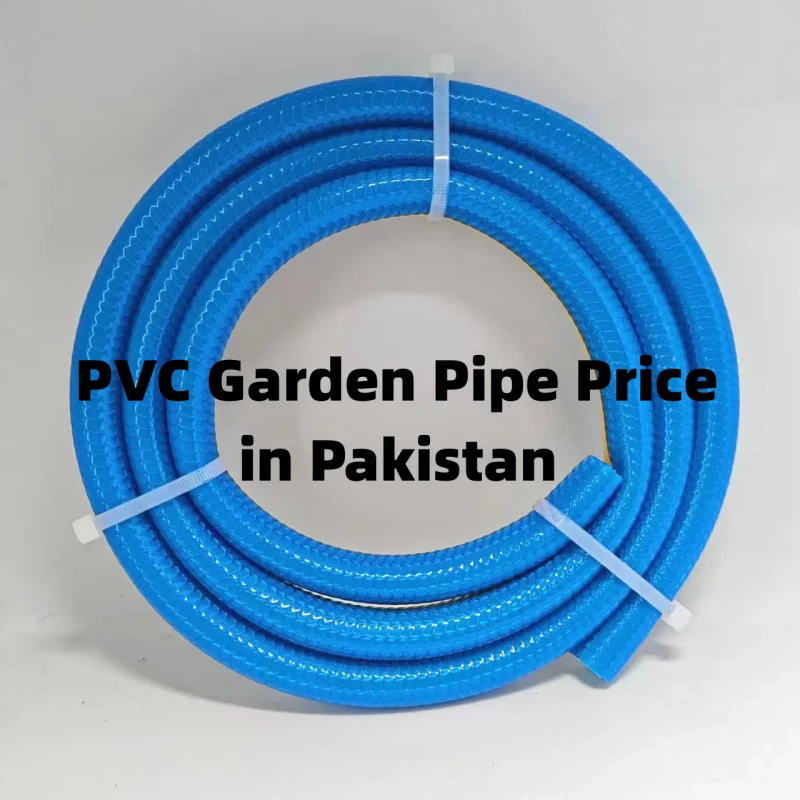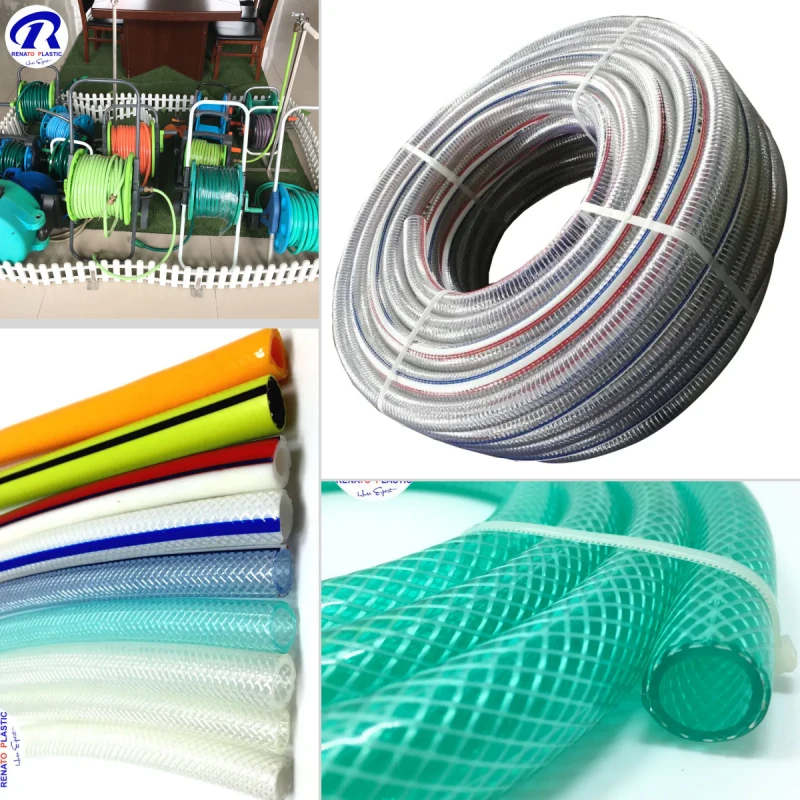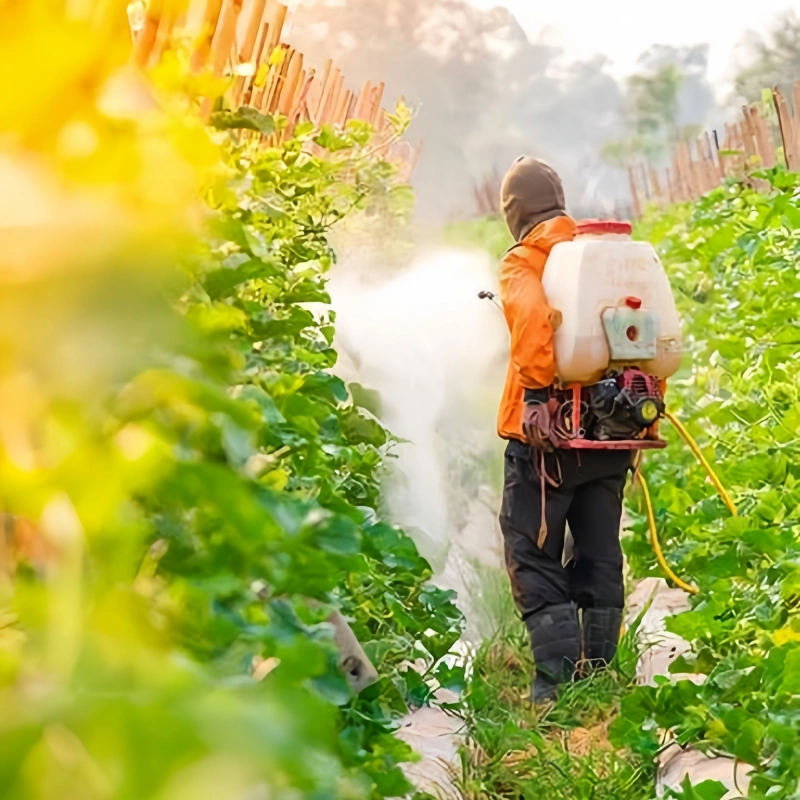PVC vs Rubber Garden Hose: A Comprehensive Comparison Guide
Comparing PVC and rubber garden hoses: 2-3 year lifespan vs. 5-10 year lifespan, price, and pressure performance differences explained. This article focuses on comparing PVC and rubber hoses in terms of materials, performance, and cost.
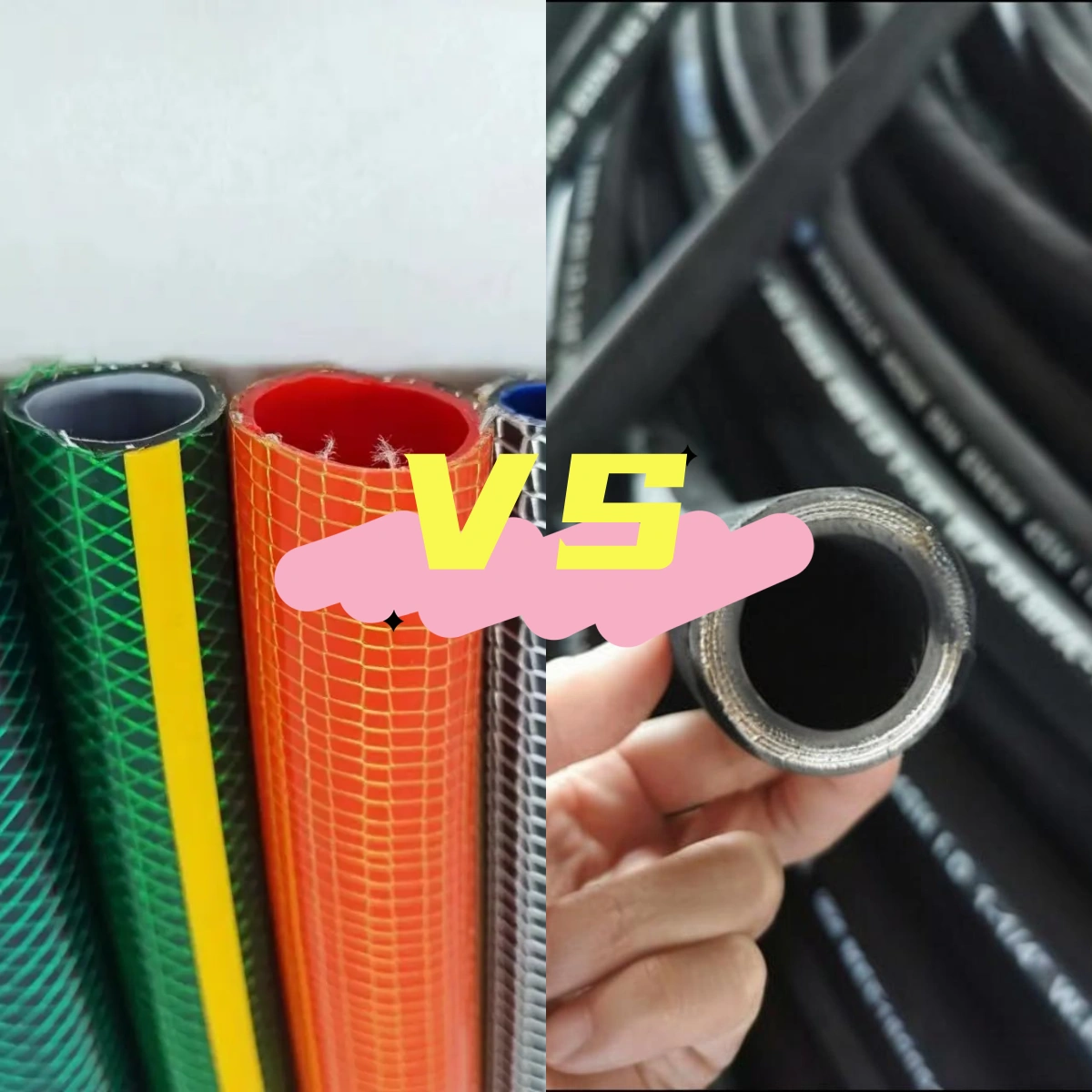
Garden hoses are indispensable tools for homeowners, gardeners, and landscape professionals, but choosing between PVC (Polyvinyl Chloride) and rubber hoses can be a perplexing task. Both materials serve the same basic purpose—transporting water—but their performance, durability, and cost vary significantly. This guide dives deep into the science, practicality, and economics of PVC vs. rubber hoses, equipping you with data-driven insights to make an informed purchase.
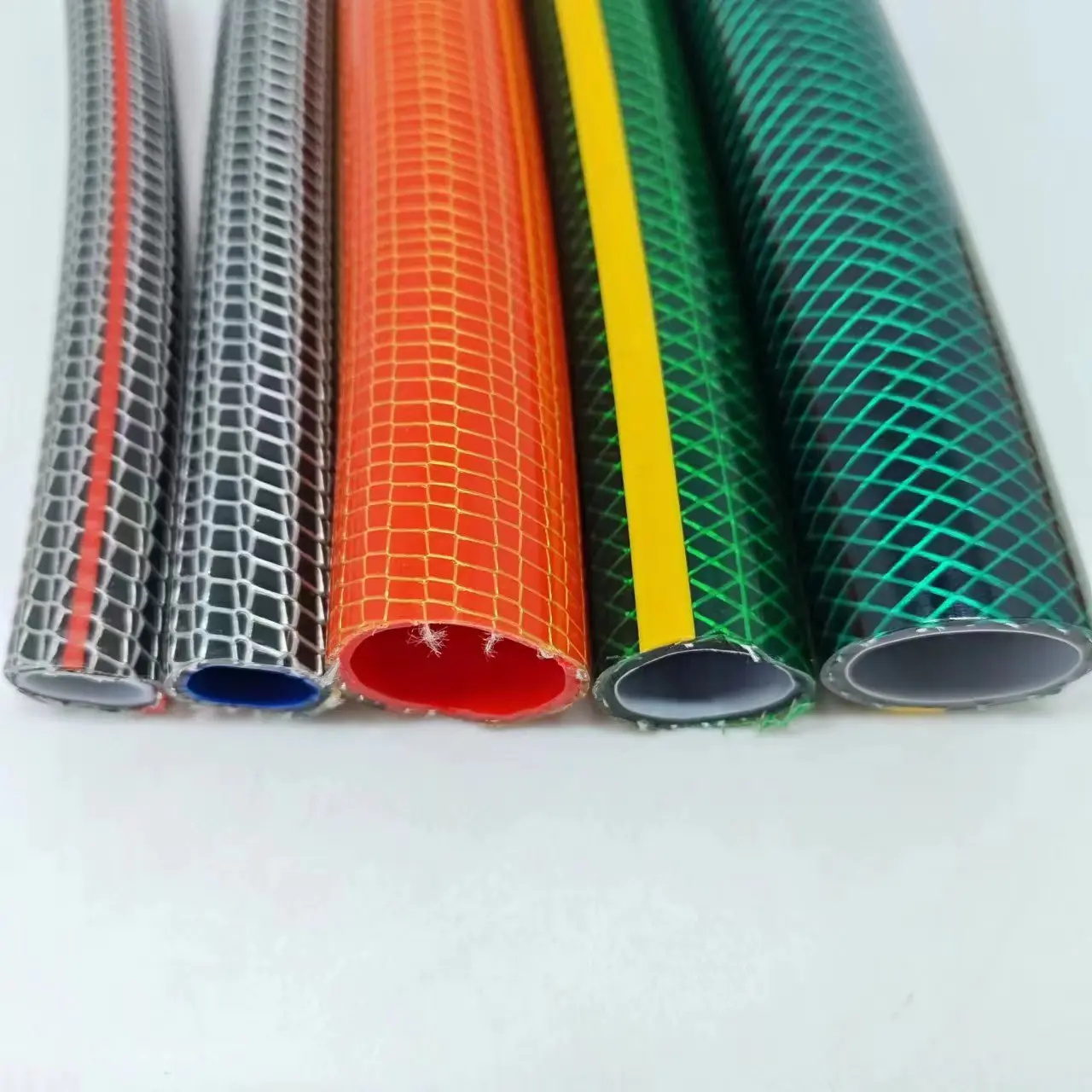
1. Material Science: PVC vs. Rubber
To understand their differences, we must first examine their chemical composition and manufacturing processes.
PVC Hoses
PVC is a synthetic polymer derived from vinyl chloride monomers. Most garden PVC hoses are reinforced with polyester or nylon fabric to enhance tensile strength, resulting in a rigid yet flexible structure. The manufacturing process involves extruding PVC resin into a tube shape, followed by braiding or spiraling reinforcing cords (e.g., polyester) around the core. Some PVC hoses include UV stabilizers (e.g., carbon black or chemical additives) to mitigate sun damage, while others are uncoated for cost reduction.
Rubber Hoses
Rubber hoses are typically made from synthetic rubbers like EPDM (Ethylene Propylene Diene Monomer) or natural rubber (less common due to cost and allergen risks). EPDM is favored for its exceptional weather resistance, ozone tolerance, and flexibility across a wide temperature range (-40°C to 120°C). The production process involves mixing raw rubber with fillers (e.g., carbon black for strength), antioxidants, and accelerators, then molding it into a tube with steel or textile reinforcement (e.g., high-tensile steel wires) for high-pressure applications.
Key Material Properties Comparison
| Property | PVC Hose | Rubber Hose (EPDM) |
|---|---|---|
| Chemical Composition | Synthetic polymer (C₂H₃Cl)n + reinforcements | Synthetic elastomer (C₅H₈)ₙ + reinforcements |
| Temperature Range | -10°C to 60°C (short-term peaks to 80°C) | -40°C to 120°C (continuous) |
| UV Resistance | Poor (without stabilizers); degrades in 2–3 years | Excellent (EPDM inherently UV-stable); lasts 5–10+ years |
| Ozone Resistance | Poor (ozone cracks over time) | Excellent (EPDM resists ozone degradation) |
2. Performance: Durability, Flexibility, and Pressure
The real-world performance of a hose hinges on three critical factors: durability, flexibility, and pressure tolerance. Let’s break these down.
Durability: Wear, Tear, and Aging
Durability is determined by resistance to abrasion, cracking, and environmental stress.
PVC Hoses:
PVC is inherently rigid, making it prone to cracking in cold temperatures (below -10°C) due to loss of elasticity. Even with UV stabilizers, prolonged sun exposure causes photodegradation—surface cracking and brittleness—over 2–3 years. Abrasion resistance is moderate: PVC hoses may develop micro-tears when dragged over rough surfaces (e.g., gravel, concrete).Data Point: A 2022 study by the American Hose Manufacturers Association (AHMA) found that uncoated PVC hoses exposed to 6 hours of daily UV radiation showed 30% more surface cracks after 12 months than rubber hoses.
Rubber Hoses:
EPDM rubber’s molecular structure allows it to flex repeatedly without cracking. Its elastic nature enables it to absorb impacts (e.g., being stepped on or dragged) and resist abrasion better than PVC. EPDM also retains flexibility in extreme cold, making it ideal for winter use.Data Point: AHMA tests show that EPDM hoses retain 90% of their original flexibility after 5 years of outdoor use, compared to just 40% for PVC hoses.
Flexibility: Bend Radius and Ease of Use
Flexibility directly impacts user experience—stiff hoses are harder to maneuver, especially in tight spaces.
PVC Hoses:
Unreinforced PVC hoses are extremely stiff (bend radius > 10 cm), requiring kinks to navigate corners. Reinforced PVC hoses (with polyester cords) are slightly more flexible but still require significant force to bend. At low temperatures (<5°C), PVC becomes brittle, increasing the risk of kinking or snapping.Rubber Hoses:
Rubber hoses have a much smaller bend radius (as low as 5 cm) due to their elastic properties. Even in sub-zero temperatures, they remain flexible, making them easier to coil, drag, and store.
Pressure Tolerance: Working Pressure (WP) and Burst Pressure
Garden hoses are rated by working pressure (maximum safe pressure during use) and burst pressure (pressure at which failure occurs). Higher ratings are critical for tasks like washing cars or powering sprinkler systems.
PVC Hoses:
Typical working pressure ranges from 30–60 PSI (2.0–4.1 bar), with burst pressures of 150–300 PSI (10.3–20.7 bar). The rigidity of PVC limits pressure capacity, as excessive force can cause the rigid structure to split along reinforcement seams.Rubber Hoses:
Rubber hoses (especially EPDM) handle higher pressures, with working pressures of 40–80 PSI (2.8–5.5 bar) and burst pressures of 200–400 PSI (13.8–27.6 bar). The flexibility of rubber distributes pressure more evenly across the hose, reducing the risk of failure.
3. Cost Analysis: Initial Purchase vs. Long-Term Value
Cost is a major deciding factor, but it’s essential to consider both upfront expenses and long-term durability.
PVC Hoses
Entry-Level Price: 10–25 for a 50-foot (15m) hose (e.g., generic brands like Gilmour Soft-Flex).
Mid-Range Price: 25–50 for reinforced PVC hoses with UV stabilizers (e.g., Craftsman 45031).
Premium Price: 50–80 for heavy-duty PVC hoses with brass fittings (e.g., Toro 58371).
Pros: Lowest initial cost; widely available at hardware stores.
Cons: Frequent replacement needed (every 2–3 years), increasing long-term costs.
Rubber Hoses
Entry-Level Price: 25–40 for a 50-foot EPDM hose (e.g., Flexzilla ZillaFlow).
Mid-Range Price: 40–70 for reinforced rubber hoses with steel couplings (e.g., Water Right Professional).
Premium Price: 70–120 for commercial-grade rubber hoses (e.g., Goodyear 83400).
Pros: Longer lifespan (5–10+ years); lower replacement frequency.
Cons: Higher upfront cost; heavier (rubber weighs ~1.2–1.5 lbs/ft vs. PVC’s ~0.8–1.0 lbs/ft).
Cost per Year Comparison:
PVC: 3–4/year (at $10/year replacement).
Rubber: 2–3/year (at $25/5-year lifespan).
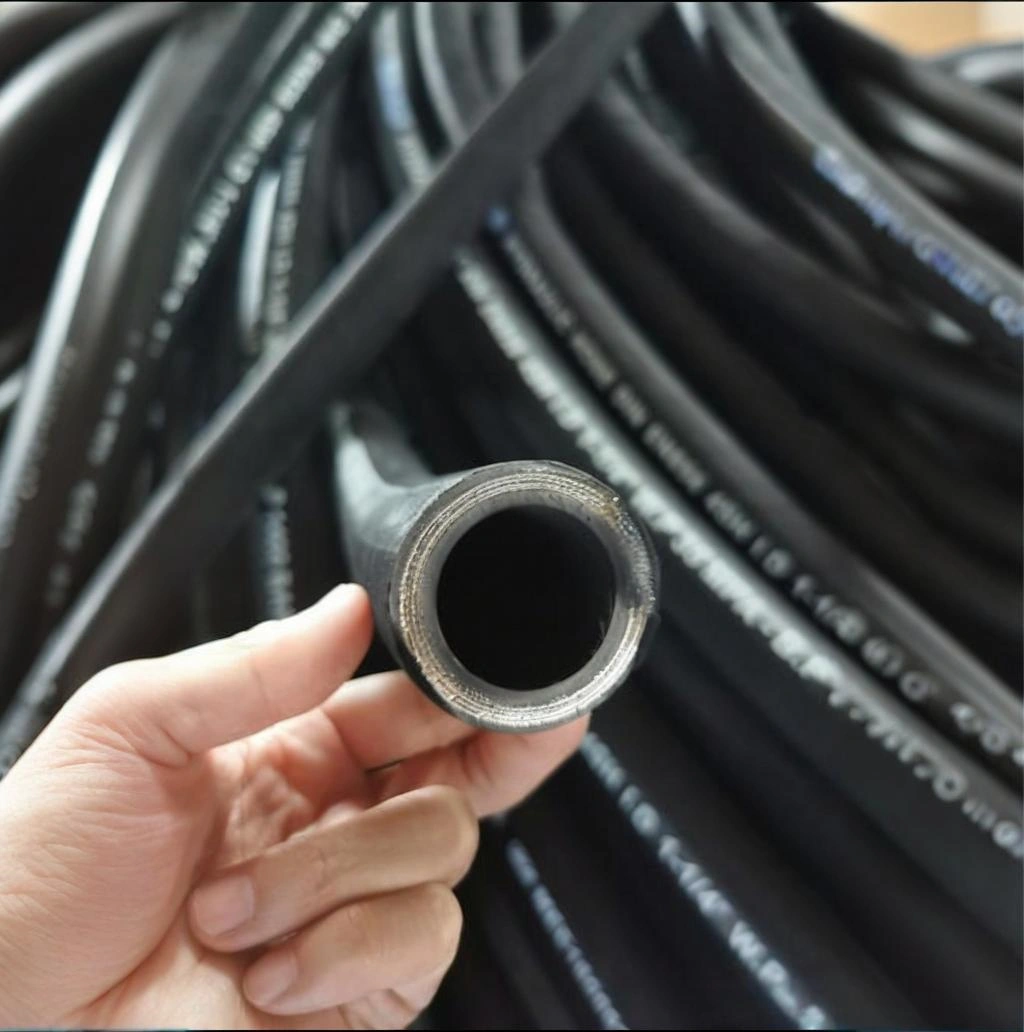
4. Use Cases: Which Hose for Which Job?
The choice between PVC and rubber depends on your specific needs. Here’s a breakdown of ideal scenarios:
PVC Hoses: Best For
Light-Duty, Short-Term Use: Occasional watering (1–2 times/week), small gardens, or potted plants.
Indoor/Protected Outdoor Use: Garages, patios, or shaded areas where UV exposure is minimal.
Budget-Conscious Buyers: First-time buyers or those prioritizing low initial cost over longevity.
Limitations: Avoid in extreme temperatures, heavy foot traffic, or high-pressure tasks (e.g., pressure washing).
Rubber Hoses: Best For
Heavy-Duty, Frequent Use: Daily watering, large lawns, or commercial landscaping (e.g., golf courses, nurseries).
Harsh Environments: Areas with intense UV exposure, freezing winters, or exposure to oils/chemicals (EPDM resists many chemicals).
Professional Use: Landscapers, farmers, or contractors needing durability and high pressure (e.g., sprinkler systems, pressure washers).
5. Maintenance Tips
Proper care extends hose life, regardless of material:
PVC Hoses:
Store indoors or in shaded areas to prevent UV damage.
Drain completely after use to avoid water pooling (which accelerates mold growth).
Avoid sharp bends; use a hose reel to reduce kinking.
Rubber Hoses:
Rinse with fresh water after use (especially if exposed to fertilizers/pesticides).
Inspect for cuts or bulges annually; replace if damaged.
Store coiled loosely (avoid tight loops to prevent creasing).
6. Purchase Advice: How to Choose?
Use this decision tree to select the right hose:
What’s your budget?
Under $30: Opt for PVC (entry-level).
Over $30: Consider rubber (longer lifespan).
How often will you use it?
<2x/week: PVC is sufficient.
3x+/week: Invest in rubber.
What’s your climate?
Hot/sunny: Rubber (UV-resistant).
Cold/winter: Rubber (flexible in low temps).
Do you need high pressure?
Light tasks (watering cans): PVC.
Sprinklers/pressure washers: Rubber.
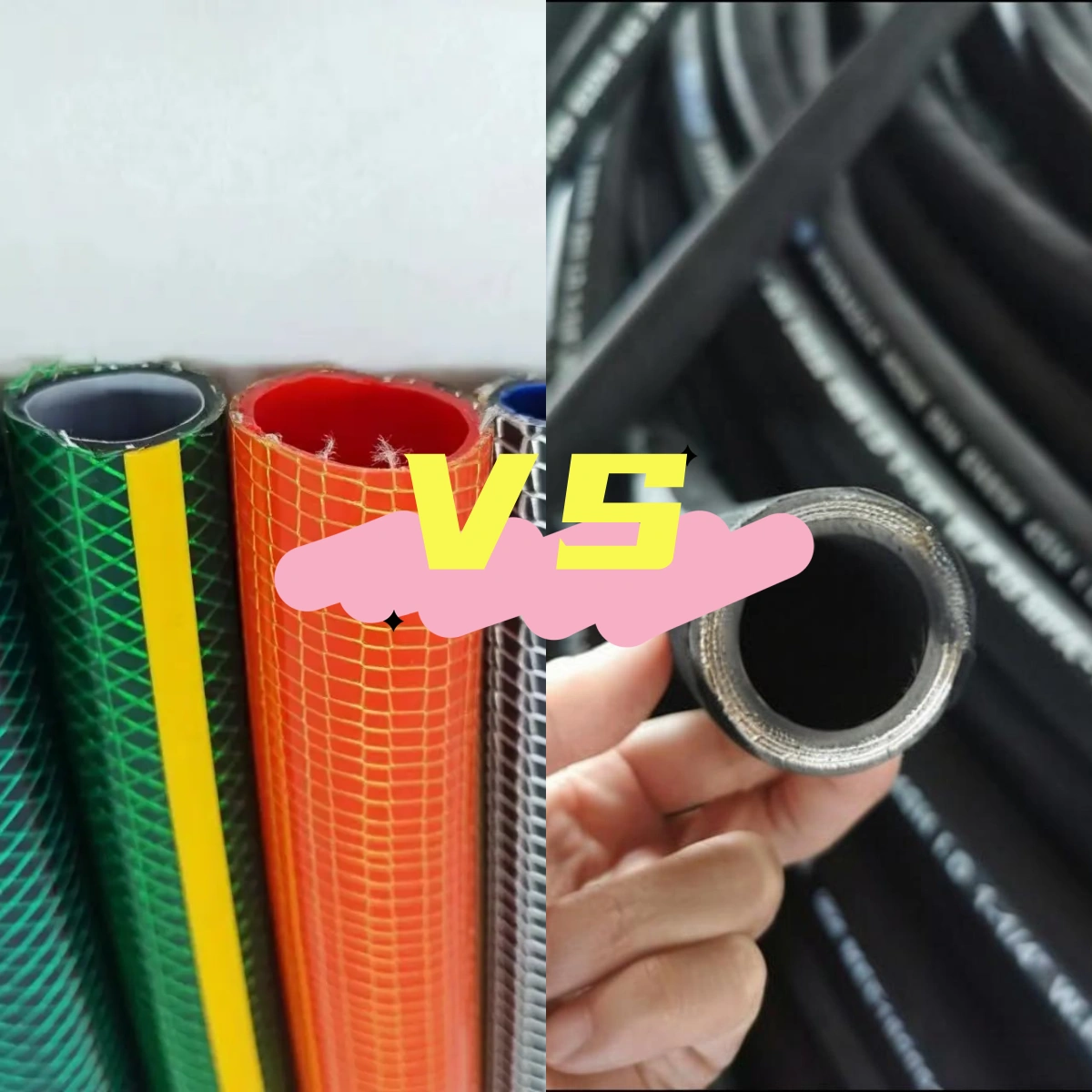
Conclusion
PVC and rubber garden hoses serve distinct purposes. PVC excels in affordability and casual use but falters in durability and extreme conditions. Rubber, though pricier upfront, delivers superior longevity, flexibility, and performance—making it a worthwhile investment for frequent or heavy-duty use. By aligning your choice with your usage patterns, climate, and budget, you’ll ensure years of reliable service from your garden hose.
